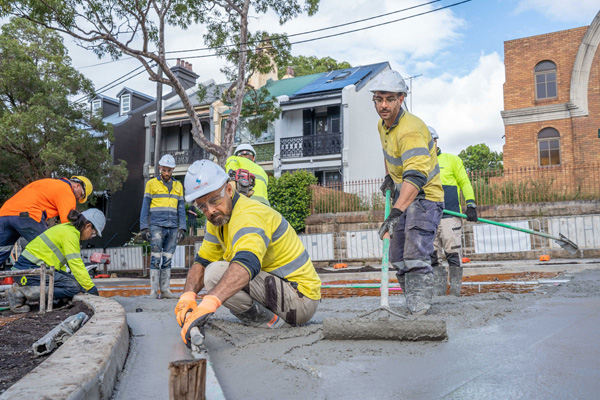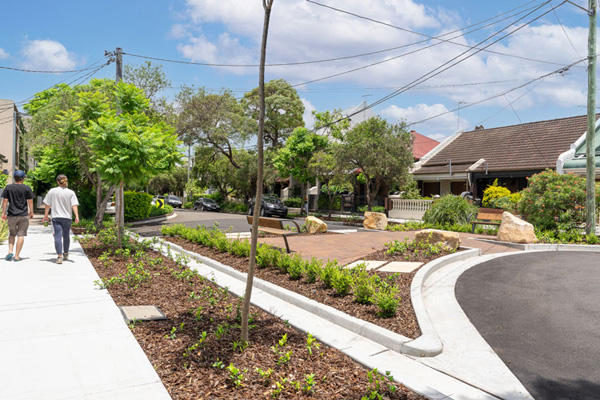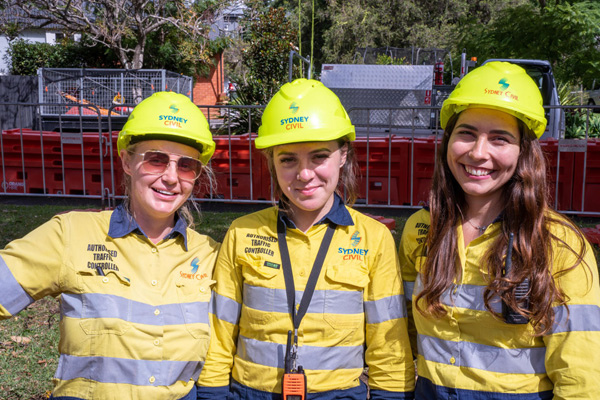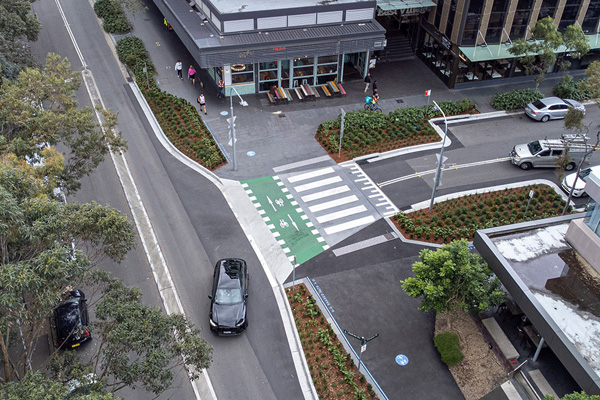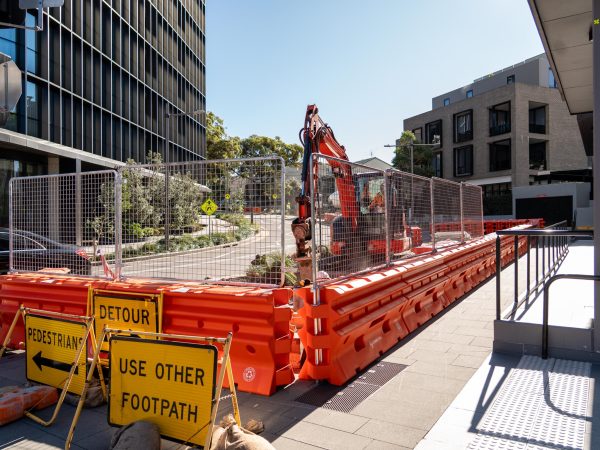Delivering infrastructure and drainage works in the heart of Sydney’s CBD requires precision, patience, and a deep respect for the community that relies on the city every day. At Sydney Civil, every stage of the process is carefully managed — from pre-start planning through to final restoration. The following outlines how a typical inner-city drainage project progresses from start to finish.
Pre-Start Planning: Safety and Community First
Our journey begins long before the first machine arrives on site. Pre-start planning is where Sydney Civil lays our groundwork for a successful project. Roads, laneways, and footpaths are heavily trafficked, detailed traffic control plans are developed to ensure that both vehicles and pedestrians can continue to move safely around the works.
Our construction plans are tailored to the CBD’s unique rhythms, with disruptive works often scheduled outside of peak commuter times or late at night to minimise inconvenience. We also clearly communicate with businesses, residents, and local stakeholders ensuring that the community is informed about the timing, scope, and duration of the project.
Site Boundaries and Establishing the Work Zone
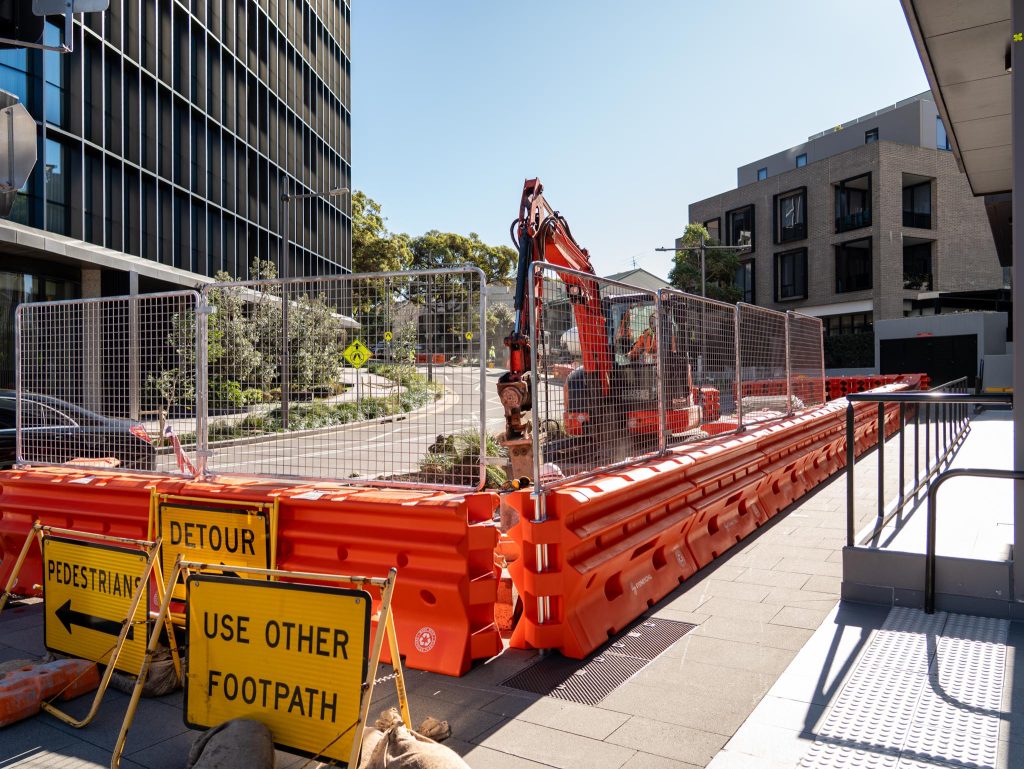
Once traffic management strategies are in place, high-visibility fencing, barriers, and hoardings are installed to create a secure work zone. Pedestrian diversions keep people moving safely, and we install tall barriers for drainage works projects as sites typically involve deep excavation work. The installation of such barriers minimises risk to the public. This stage also includes establishing site compounds, delivery areas, and laydown zones for materials — all designed to minimise the footprint in busy city streets.
Pre-Excavation: Investigations and Safety Checks
Before excavation can begin, at Sydney Civil we carry out extensive pre-excavation investigations. Locating and protecting underground services is one of the most critical steps in inner-city works. Using ground-penetrating radar, service plans, and non-destructive digging methods such as vacuum excavation, our crews identify water, gas, electrical, and telecommunications assets hidden beneath the surface.
Once located, services are carefully marked on the ground, surveyed, and protected with shielding or temporary supports. It is essential that once underground services have been identified in their locations, they are backfilled and recorded, with this information communicated at the start of each workday during excavation activities.
Geotechnical and environmental checks are also performed. Where high-pressure gas, water, high-voltage electricity, or critical telecommunication lines are present, an additional spotter from the relevant Service Authority must be on site to supervise the works.
These careful checks prevent costly damage, safeguard workers, and avoid unnecessary disruption to the city.
Excavation: Precision in Confined City Spaces
With preparations complete, excavation begins. In the Sydney CBD, excavation often takes place within confined corridors bordered by live traffic and footpaths, so precision and control are paramount. Compact excavators and vacuum trucks are utilised in areas with restricted access, while larger excavators are deployed for deeper trenches where conditions allow. Deep excavations are supported with engineered shoring, and in some cases, existing services are temporarily suspended above ground to allow pipes to be threaded safely through the gaps.
This stage demands constant coordination between operators, spotters, and traffic controllers to ensure excavation progresses safely and efficiently within the city’s busiest streets. The spotter’s role is to maintain clear communication with the operator, providing critical guidance in areas the operator cannot see. This requires complete focus, free from distractions caused by the site, traffic, or surrounding community. Their responsibility is equally as important as that of the excavator operator.
Installation: Building Sydney’s Future Drainage Systems
Once trenches are open, installation of the drainage infrastructure begins. Pipes, culverts, and pits are lowered into place with precision, guided by survey equipment and laser levels to ensure alignment and correct gradient. Drainage relies on gravity, so exact falls must be maintained to achieve effective water flow. Bedding material such as compacted sand, crushed rock, or a more sustainable sand made of recycled glass bottles is laid beneath the pipes to provide stability and prevent settlement. Joints are sealed with rubber rings or grouting to ensure watertight connections, and access pits and junction boxes are installed at strategic intervals to allow for future maintenance and inspections. Every stage of the installation is inspected and tested, ensuring compliance with engineering specifications and guaranteeing long-term reliability.
Backfilling and Compaction: Securing the Work
Following installation, trenches are carefully backfilled in compacted layers to restore ground stability. Selected fill material is placed in stages, with each layer compacted using rollers or vibrating plates to meet engineering density requirements.
This is a critical step, as it ensures the new drainage infrastructure will remain secure underground while the surface above continues to serve as a high-traffic roadway.
Restoration: Returning Streets to the Community
The final stage is restoration, and it is the stage most visible to the public. Roadways are reinstated with fresh asphalt, seamlessly tied into existing lanes for a smooth and durable finish. Where works extend into pedestrian areas, concrete footpaths and stone paving are reconstructed to match the surrounding streetscape, ensuring continuity and preserving the character of the city.
In cases where landscaping or street furniture is affected, Sydney Civil reinstates trees, gardens, and urban amenities, often improving the area to a standard higher than before.
Positive Outcomes for the Community
When the last barriers are removed and the street is returned to the public, the benefits of the work are clear. Improved drainage infrastructure reduces flooding risks, protects property, and supports the continued growth of Sydney as a global city.
The community enjoys safer, more reliable streets, with infrastructure designed to serve generations to come. For Sydney Civil, these projects are not just about laying pipes and pouring asphalt — they are about building trust, improving liveability, and contributing to the resilience of one of the world’s most dynamic cities.
Sydney Civil remains committed to ensuring that every project, no matter how complex, is delivered with the highest standards of safety, quality, and community benefit.
Want to find out more about our work? Follow us on LinkedIn, or get in touch.

